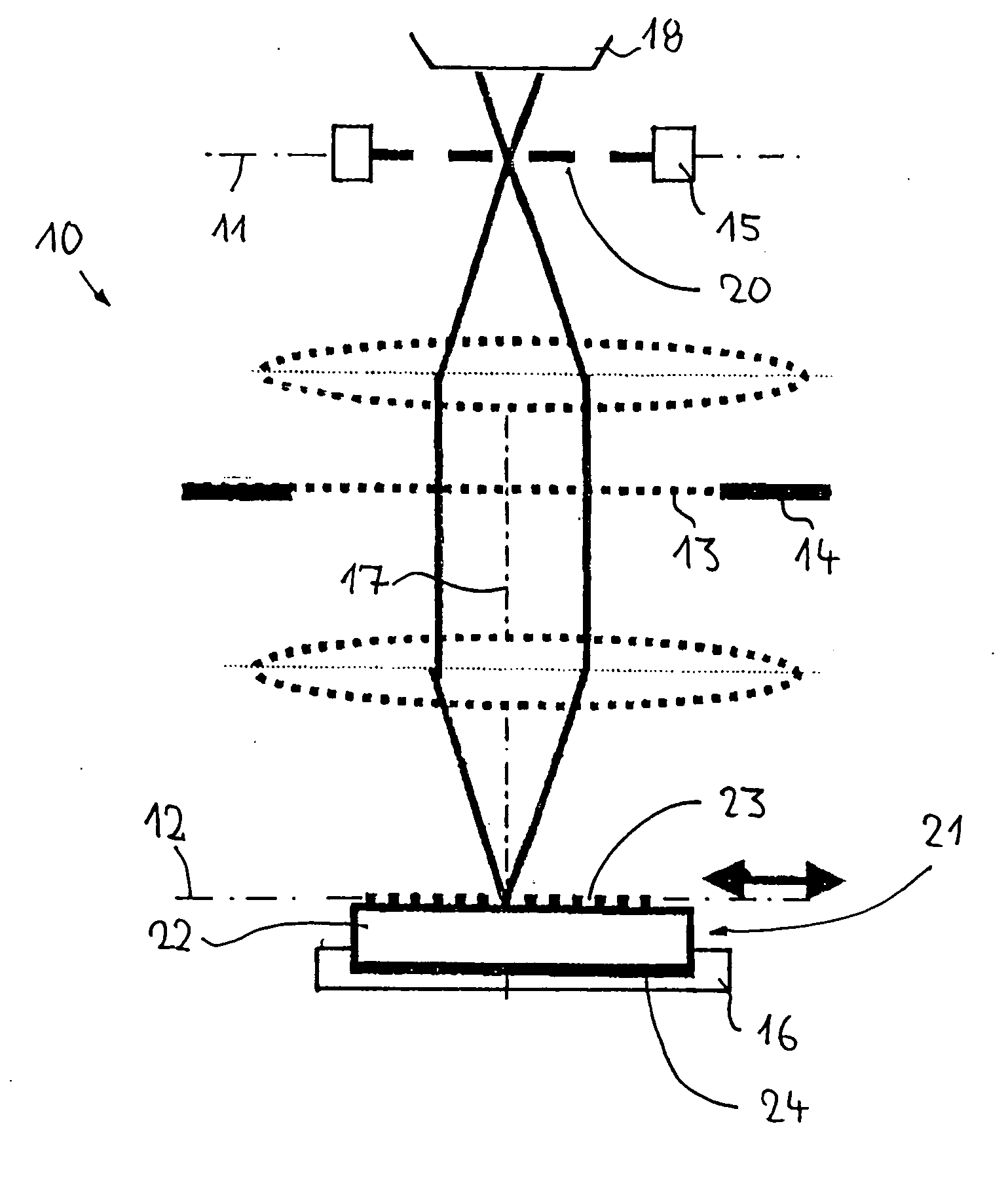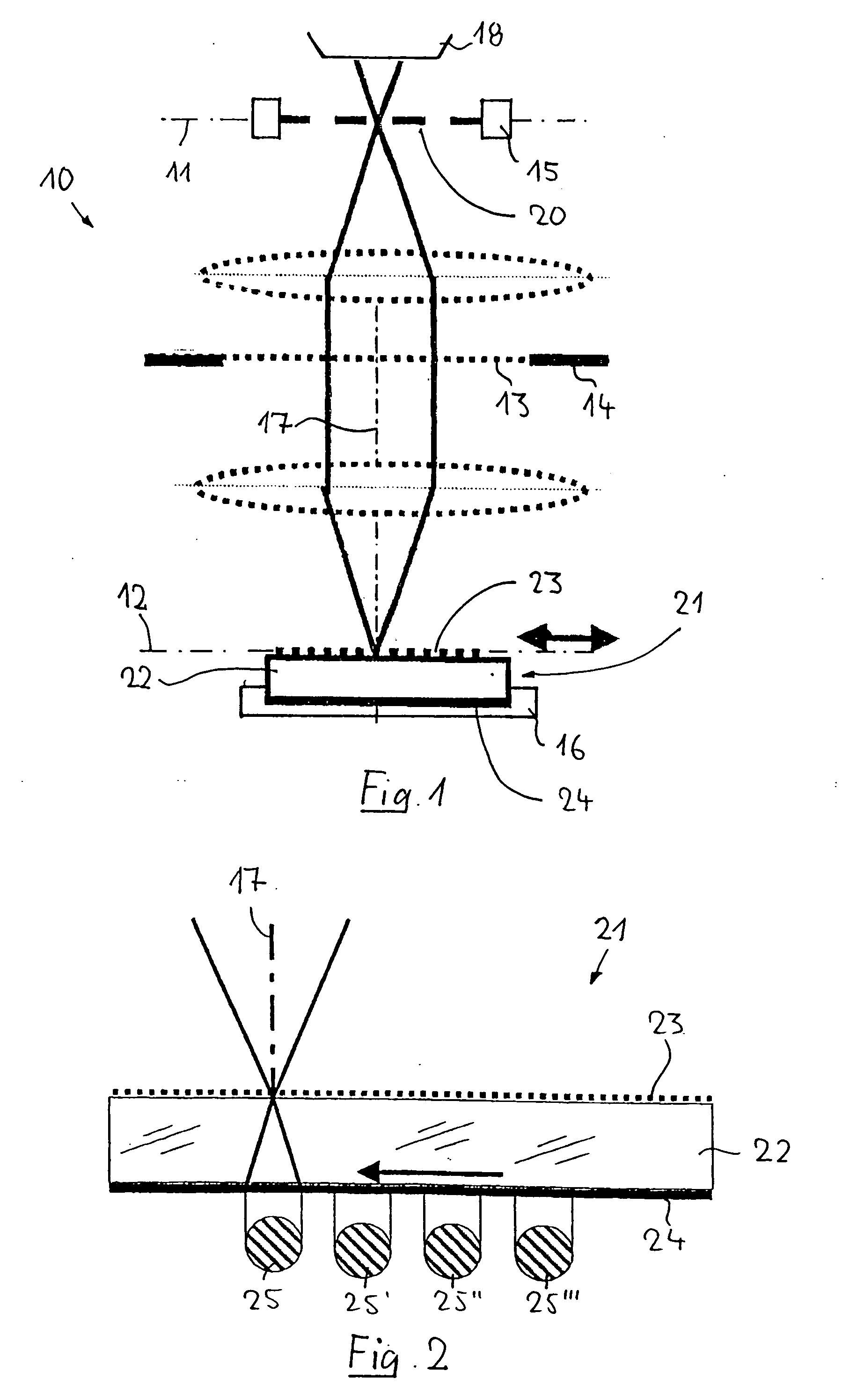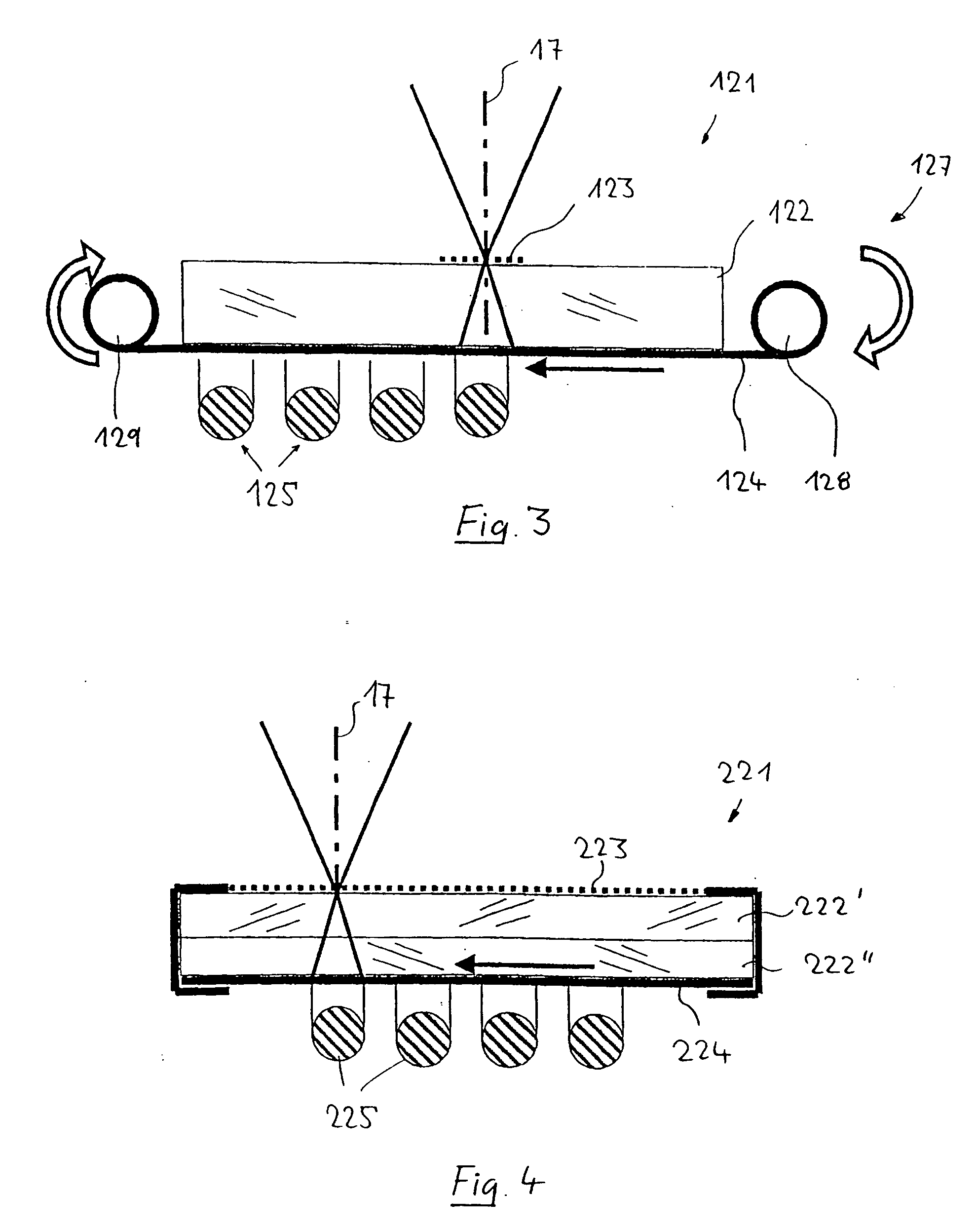Measuring method and measuring system for measuring the imaging quality of an optical imaging system
a technology of optical imaging and measuring system, which is applied in the direction of microlithography exposure apparatus, instruments, measurement devices, etc., can solve the problems of long exposure time, high equipment and time cost, and the degree to which the quality of the products produced is determined and limited, etc., to achieve fast and precise measurement of projection objectives, low cost, and low complexity
- Summary
- Abstract
- Description
- Claims
- Application Information
AI Technical Summary
Benefits of technology
Problems solved by technology
Method used
Image
Examples
Embodiment Construction
[0056] The invention is explained in more detail below using the example of the measurement of projection objectives for microlithography; however, it is also suitable for the measurement of other optical imaging systems, for example of photooptics or the like. FIG. 1 schematically shows a projection objective 10 designed for imaging with ultraviolet light, said projection objective being incorporated into a projection exposure apparatus (not illustrated) in the form of a wafer stepper at the production site of a semiconductor chip manufacturer. The projection objective 10 serves for imaging a pattern—arranged in its object plane 11—of a reticle provided with a useful pattern into the conjugate image plane 12 with respect to the object plane, on a reduced scale without an intermediate image. A semiconductor wafer covered with a photoresist layer is situated there. Located between object plane and image plane are a plurality of lenses, two of which are shown by dashed lenses, and a p...
PUM
 Login to View More
Login to View More Abstract
Description
Claims
Application Information
 Login to View More
Login to View More - R&D
- Intellectual Property
- Life Sciences
- Materials
- Tech Scout
- Unparalleled Data Quality
- Higher Quality Content
- 60% Fewer Hallucinations
Browse by: Latest US Patents, China's latest patents, Technical Efficacy Thesaurus, Application Domain, Technology Topic, Popular Technical Reports.
© 2025 PatSnap. All rights reserved.Legal|Privacy policy|Modern Slavery Act Transparency Statement|Sitemap|About US| Contact US: help@patsnap.com



